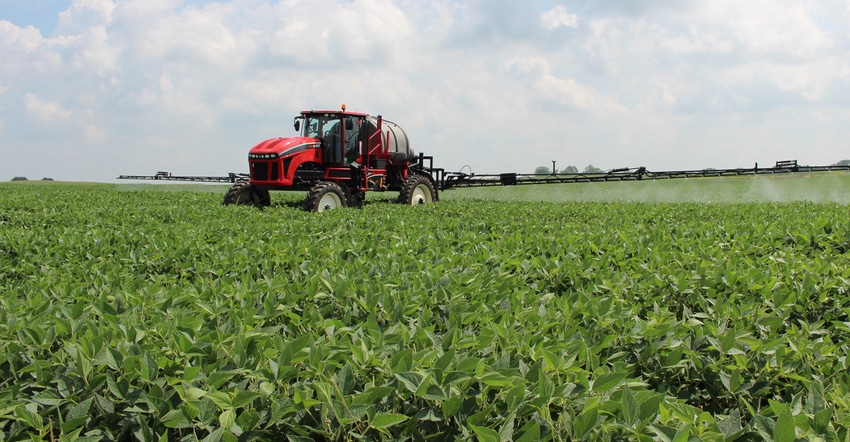December 4, 2020

With support from the soybean checkoff through the United Soybean Board, Iowa State University researchers evaluated foliar fungicides on soybeans in 2020. Because dry weather affected all seven field locations, this year’s tests were more an evaluation of fungicides largely in the absence of disease.
ISU Extension plant pathologist Daren Mueller leads the team that conducts these tests. He provides the following summary of this year’s results.
17 fungicides tested
The extremely dry weather during the 2020 growing season resulted in low infestation of leaf diseases on soybeans, notes Mueller. When these diseases are not present or are at extremely low levels, the yield response from a foliar fungicide application is minimal.
Seventeen fungicides were tested at the R3 (beginning pod) growth stage, at the recommended label rate. Unlike the previous few years, frogeye leaf spot (Cercospora sojina) was only identified at the McNay Memorial Research and Demonstration Farm (at Chariton in southern Iowa), and was very low in severity (1%). No frogeye leaf spot was observed at the other six Iowa State research farms.
These other six ISU farms where testing was conducted were:
Northwest Research and Demonstration Farm (Sutherland)
Northern Research and Demonstration Farm (Kanawha)
Northeast Research and Demonstration Farm (Nashua)
Central Iowa Research Farms (Ames)
Armstrong Memorial Research and Demonstration Farm (Lewis)
Southeast Research and Demonstration Farm (Crawfordsville)
The main foliar disease observed in 2020 was septoria brown spot (Septoria glycines), although this was at very low levels (less than 3% infection in the lower canopy) at all seven locations.
Pay to spray in dry year?
Across the seven locations, Endura, Domark 230, Topguard EQ, Quadris, Quilt Xcel, Delaro, Preemptor and Priaxor averaged a yield response of less than 1.5 bushels per acre. The yield response for Lucento, Acropolis, Veltyma, Quadris Top, Revytek and Stratego YLD averaged between 1.5 and 2.5 bushels per acre, and the yield response for Aproach Prima, Miravis Neo, and Affiance averaged between 2.5 and 3.2 bushels per acre.
“This research is a good reminder that soybean foliar fungal diseases need moisture to develop,” Mueller says. “The primary purpose of foliar fungicides is to manage foliar diseases such as frogeye leaf spot, cercospora leaf blight (Cercospora kikuchii) and septoria brown spot. When these diseases are not present or are at extremely low levels, the yield response from a foliar fungicide application is minimal.”
He adds, “We know that fungicide resistance issues for frogeye leaf spot and septoria brown spot exist across Iowa. When disease risk exists, you should be sure to consult a current efficacy chart like the one produced by the Crop Protection Network to select a fungicide that will control the disease of concern.”
Check ISU evaluation table
Fungicides are very important tools for disease management, and it is critical to preserve their efficacy. “In drier years like 2020, foliar diseases are not as much of a problem, so the need for foliar fungicides is also relatively limited,” Mueller notes. “It is also important to consider economic gains from any fungicide application. Potential yield response must exceed the cost of fungicide product and application cost.”
Mueller has put together a table showing the yield response in bushels per acre for the various fungicide products in ISU’s statewide foliar fungicide evaluation tests in 2020. All products were applied at R3 soybean growth stage. To view the results, visit Statewide soybean foliar fungicide evaluation in 2020.
Source: ISU, which is solely responsible for the information provided and is wholly owned by the source. Informa Business Media and all its subsidiaries are not responsible for any of the content contained in this information asset.
You May Also Like




